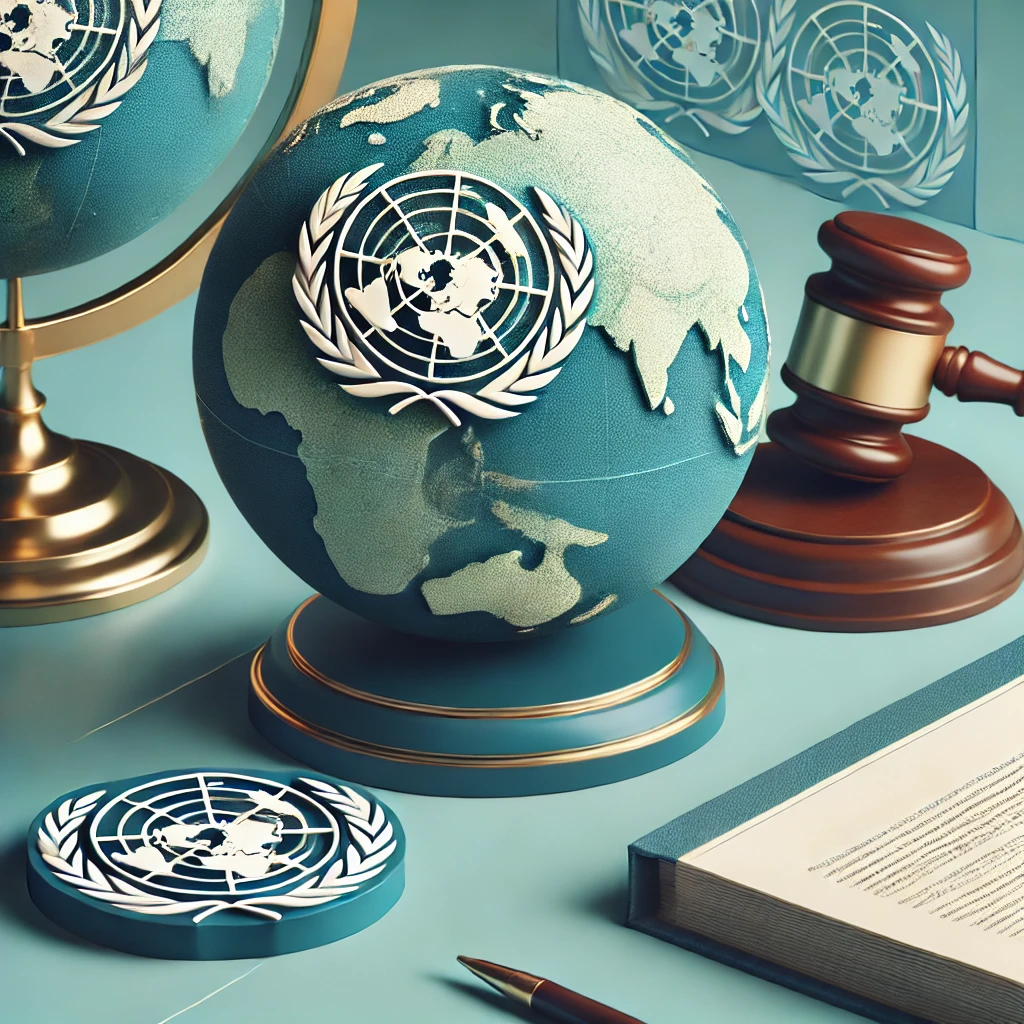The United Nations Convention on the Law of the Sea, commonly known as UNCLOS, stands as a cornerstone of international maritime law. This comprehensive agreement, often referred to as the “Constitution for the Oceans,” establishes a legal framework governing all aspects of ocean space. From navigational rights to environmental protection, and from economic activities to scientific research, UNCLOS plays a crucial role in maintaining order and promoting cooperation in the world’s seas and oceans. In this blog post, we will delve into the intricacies of UNCLOS, exploring its history, key provisions, and significance in today’s interconnected global landscape.
The Genesis of UNCLOS
Historical Context
The journey towards a unified law of the sea began long before the adoption of UNCLOS. For centuries, maritime nations struggled with conflicting claims over ocean territories and resources. The concept of “freedom of the seas,” introduced by Dutch jurist Hugo Grotius in the 17th century, allowed for unrestricted navigation but did little to address growing concerns about resource exploitation and territorial disputes. As technology advanced and the strategic importance of oceans grew, it became increasingly clear that a comprehensive international agreement was necessary.
Development and Adoption
The process of creating UNCLOS was lengthy and complex, spanning several decades:
- First UN Conference on the Law of the Sea (UNCLOS I), 1956-1958: Resulted in four conventions but failed to reach agreement on crucial issues like the breadth of territorial seas.
- Second UN Conference (UNCLOS II), 1960: Attempted to resolve outstanding issues but ended without agreement.
- Third UN Conference (UNCLOS III), 1973-1982: After nine years of negotiations, UNCLOS was finally adopted on December 10, 1982, in Montego Bay, Jamaica.
- Entry into Force: UNCLOS came into effect on November 16, 1994, one year after the 60th country ratified it.
This timeline illustrates the challenges involved in crafting a universally acceptable framework for ocean governance. The final text of UNCLOS represents a delicate balance between the interests of coastal states, maritime powers, and developing nations.
Key Provisions of UNCLOS
UNCLOS establishes a comprehensive legal regime for the world’s oceans and seas. Here are some of its most important provisions:
Territorial Sea and Contiguous Zone
- Territorial Sea: Extends up to 12 nautical miles from the baseline of a coastal state. Within this zone, the state has full sovereignty, subject to the right of innocent passage for foreign vessels.
- Contiguous Zone: Extends up to 24 nautical miles from the baseline. Here, the coastal state may exercise control necessary to prevent or punish infringement of its customs, fiscal, immigration, or sanitary laws.
Exclusive Economic Zone (EEZ)
The EEZ is one of UNCLOS’s most significant innovations. It extends up to 200 nautical miles from the baseline and grants coastal states:
- Sovereign rights for exploring, exploiting, conserving, and managing natural resources (both living and non-living) of the waters, seabed, and subsoil.
- Jurisdiction over artificial islands, installations, marine scientific research, and environmental protection.
Other states retain freedoms of navigation and overflight in the EEZ, as well as the right to lay submarine cables and pipelines.
Continental Shelf
UNCLOS defines the continental shelf as the seabed and subsoil of submarine areas extending beyond the territorial sea. Coastal states have sovereign rights over their continental shelf for the purpose of exploring and exploiting its natural resources. The shelf extends at least 200 nautical miles from the baseline, and can be extended up to 350 nautical miles or 100 nautical miles beyond the 2,500-meter isobath, subject to certain conditions and submission to the Commission on the Limits of the Continental Shelf.
High Seas
The high seas are all parts of the sea not included in the EEZ, territorial sea, or internal waters of a state. UNCLOS establishes the principle of the “freedom of the high seas,” which includes:
- Freedom of navigation
- Freedom of overflight
- Freedom to lay submarine cables and pipelines
- Freedom to construct artificial islands and other installations
- Freedom of fishing
- Freedom of scientific research
These freedoms are to be exercised with due regard for the interests of other states and subject to the provisions of UNCLOS.
The Area
UNCLOS designates the seabed, ocean floor, and subsoil beyond national jurisdiction as “the Area.” This region and its resources are declared the “common heritage of mankind.” Exploration and exploitation of resources in the Area are to be carried out for the benefit of mankind as a whole, irrespective of the geographical location of states.
UNCLOS Zones Visualized
To better understand the maritime zones established by UNCLOS, let’s look at a visual representation:
[Nautical Miles] 0 12 24 200 350 (max)
| | | | |
Baseline -----|----|---------------|---------------|-------------------------------------|--------------------------|
| | | | | |
| | Territorial | Contiguous | | |
Land | | Sea | Zone | Exclusive Economic Zone | Extended Continental |
| | | | | Shelf |
| | | | | |
| | Full | Limited | Sovereign rights for resources | Sovereign rights for |
| | sovereignty | enforcement | and some jurisdictional rights | seabed resources |
| | | rights | | |
| |
| The High Seas |
| |
The Area (seabed beyond national jurisdiction)This diagram illustrates the different maritime zones and their respective distances from the baseline, as well as the rights associated with each zone.
Institutional Framework
UNCLOS established several institutions to ensure its effective implementation:
International Tribunal for the Law of the Sea (ITLOS)
- Purpose: To adjudicate disputes arising from the interpretation and application of UNCLOS.
- Composition: 21 independent members elected by States Parties.
- Jurisdiction: Compulsory jurisdiction over certain categories of disputes, with optional jurisdiction in other areas.
International Seabed Authority (ISA)
- Purpose: To organize and control activities in the Area, particularly with respect to mineral resources.
- Structure: Consists of an Assembly (all members), a Council (36 members), and a Secretariat.
- Functions: Includes adopting rules and regulations for exploration and exploitation of seabed resources, and ensuring equitable sharing of benefits.
Commission on the Limits of the Continental Shelf (CLCS)
- Purpose: To facilitate the implementation of UNCLOS regarding the establishment of the outer limits of the continental shelf beyond 200 nautical miles.
- Composition: 21 experts in geology, geophysics, or hydrography.
- Functions: Considers submissions by coastal states and makes recommendations on the outer limits of the continental shelf.
UNCLOS in Practice: Successes and Challenges
Successes
- Widespread Acceptance: As of 2023, 168 countries and the European Union have ratified UNCLOS, demonstrating its global recognition.
- Dispute Resolution: UNCLOS has provided a framework for resolving maritime disputes. For example, in 2016, the Permanent Court of Arbitration used UNCLOS to rule on the South China Sea dispute between the Philippines and China.
- Environmental Protection: UNCLOS has promoted marine environmental protection by obligating states to prevent, reduce, and control pollution of the marine environment.
- Scientific Research: The convention has facilitated international cooperation in marine scientific research, leading to advancements in oceanography and marine biology.
Challenges
- Non-participation of Some Major Powers: Notably, the United States has signed but not ratified UNCLOS, citing concerns about the deep seabed mining regime.
- Emerging Issues: UNCLOS was drafted before the full emergence of issues like climate change, biodiversity loss, and cyber threats to maritime security.
- Enforcement: While UNCLOS provides mechanisms for dispute resolution, enforcing decisions remains challenging, especially when powerful states are involved.
- Delimitation Disputes: Despite UNCLOS provisions, many maritime boundary disputes persist, particularly in resource-rich areas.
The Future of UNCLOS
As we look to the future, several key areas are likely to shape the evolution of UNCLOS:
Addressing New Challenges
- Climate Change: Rising sea levels may affect baselines and maritime boundaries. UNCLOS may need to adapt to address these changes.
- Biodiversity Beyond National Jurisdiction (BBNJ): Negotiations are ongoing for a new implementing agreement under UNCLOS to address the conservation and sustainable use of marine biodiversity in areas beyond national jurisdiction.
- Arctic Governance: As Arctic ice melts, questions about navigation rights and resource exploitation in the region are becoming more pressing.
Technological Advancements
Emerging technologies are raising new questions:
- Deep seabed mining capabilities
- Autonomous vessels
- Marine genetic resources exploitation
UNCLOS may need to evolve to address these technological developments effectively.
Strengthening Implementation
Efforts are ongoing to:
- Encourage universal participation
- Enhance capacity building for developing states
- Improve monitoring and enforcement mechanisms
Conclusion
UNCLOS stands as a remarkable achievement in international law, providing a comprehensive framework for ocean governance. Its provisions on maritime zones, resource exploitation, environmental protection, and dispute resolution have significantly contributed to maintaining order in the world’s oceans. However, as new challenges emerge and technology advances, the convention must continue to evolve. The future of UNCLOS will depend on the international community’s ability to address these challenges while maintaining the delicate balance of interests that the convention represents.
Understanding UNCLOS is crucial for anyone interested in international relations, maritime law, or environmental policy. As our oceans face increasing pressures from climate change, resource exploitation, and geopolitical tensions, the principles enshrined in UNCLOS will play a vital role in shaping our approach to these challenges. By providing a common language and framework for ocean governance, UNCLOS continues to be an indispensable tool for promoting cooperation and sustainable management of our shared marine resources.
Key Statistics on UNCLOS
To provide a clearer picture of UNCLOS’s global impact, here’s a table with some key statistics:
| Statistic | Value | Significance |
|---|---|---|
| Number of State Parties (as of 2023) | 168 | Demonstrates widespread international acceptance |
| Year of Adoption | 1982 | Marks the culmination of years of negotiation |
| Year Entered into Force | 1994 | Indicates when the convention became legally binding |
| Number of Articles | 320 | Reflects the comprehensive nature of the convention |
| Number of Annexes | 9 | Provides additional detailed regulations |
| Territorial Sea Limit | 12 nautical miles | Establishes the extent of coastal state sovereignty |
| Exclusive Economic Zone Limit | 200 nautical miles | Defines the area of resource rights for coastal states |
| Number of ITLOS Cases (as of 2023) | 29 | Shows active use of dispute resolution mechanisms |
| Number of ISA Exploration Contracts | 31 | Indicates growing interest in deep seabed resources |
This data illustrates the broad scope and significant impact of UNCLOS on global maritime governance.
Disclaimer: While every effort has been made to ensure the accuracy of the information presented in this blog post, maritime law and international agreements are complex and subject to change. This post is intended for informational purposes only and should not be considered legal advice. Readers are encouraged to consult official sources and legal experts for the most up-to-date and accurate information. If you notice any inaccuracies in this post, please report them so we can promptly make corrections.




